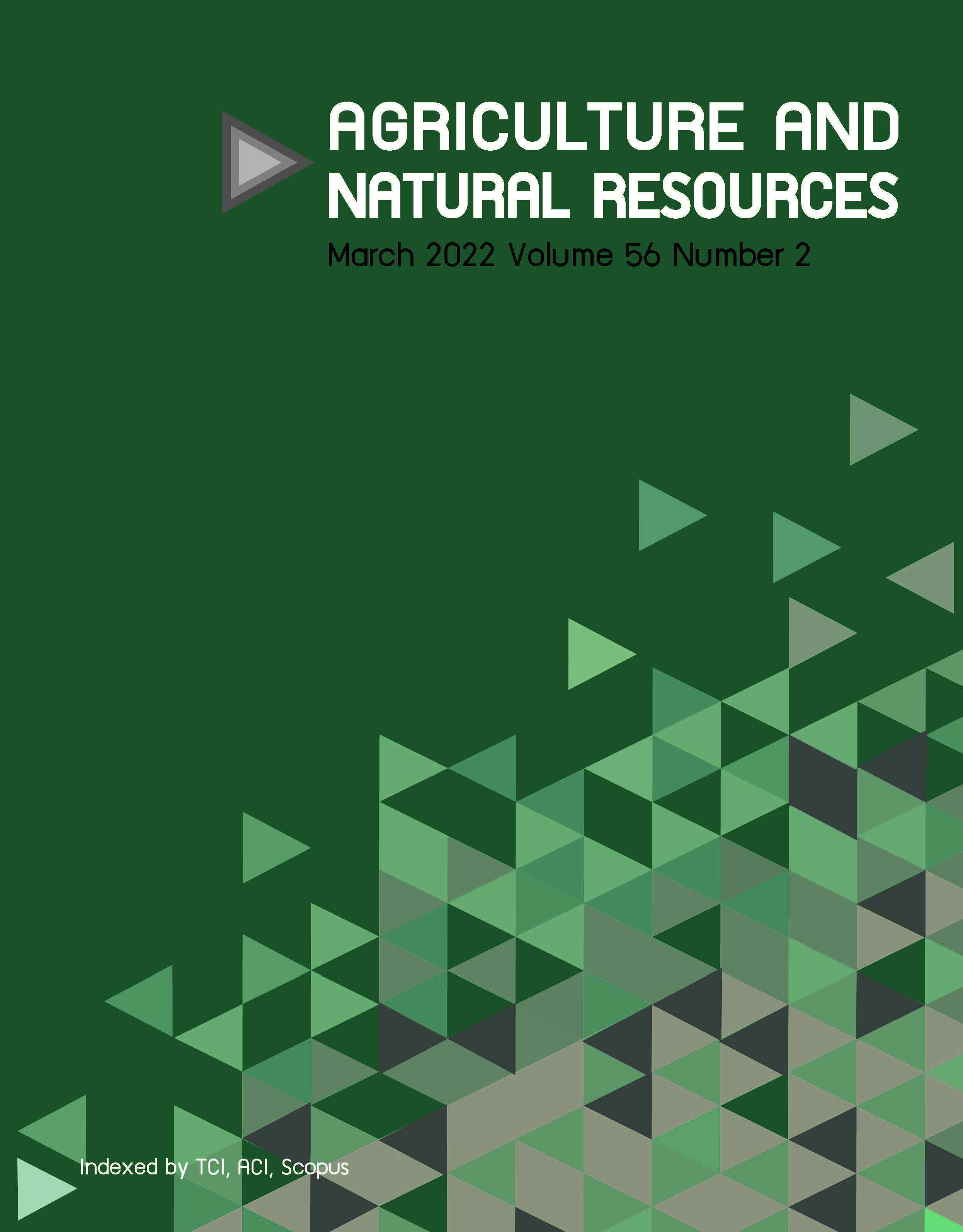Genetic diversity and relationships of Dipterocarpus alatus Roxb. (Dipterocarpaceae) on island in freshwater lake and nearby mainland
Keywords:
Dipterocarpus alatus, Genetic diversity, Genetic relationship, Microsatellite, Sequence-related amplified polymorphismAbstract
Importance of the work: Dipterocarpus alatus is an economically valuable wood and has been designated as a threatened species.
Objectives: To study the genetic diversity and relationships of D. alatus between Don Sawan Island and the nearby mainland for use in developing conservation strategies.
Materials & Methods: In total, 87 accessions of D. alatus were analyzed using microsatellite and sequence-related amplified polymorphism (SRAP) markers to investigate the genetic diversity within and among populations of D. alatus from Don Sawan Island and six populations from neighboring mainland areas in Sakon Nakhon province, Thailand.
Results: Genetic diversity analysis revealed that the lowest observed heterozygosity (Ho) of D. alatus was 0.163 for the Don Sawan Island population compared with populations on the nearby mainland. All tested populations of D. alatus had positive values of the inbreeding coefficient, which is a major indication of a decrease in Ho. Thus, the D. alatus population on Don Sawan Island is at risk and was assessed as vulnerable due to the loss of conventional genetic diversity. Cluster analysis of D. alatus relationships showed coefficients of similarity in the range -0.103 to 0.715. All accessions were clustered into four major groups corresponding to geographical distance.
Main finding: The results should be useful for D. alatus conservation in risk areas of extinction and where the species is incapable of increasing genetic diversity solely using natural means. Planting additional trees from outside sources could improve the genetic diversity of D. alatus in vulnerable areas.
Downloads
Published
How to Cite
Issue
Section
License
Copyright (c) 2022 Kasetsart Universityonline 2452-316X print 2468-1458/Copyright © 2022. This is an open access article under the CC BY-NC-ND license (http://creativecommons.org/licenses/by-nc-nd/4.0/),
production and hosting by Kasetsart University of Research and Development Institute on behalf of Kasetsart University.







